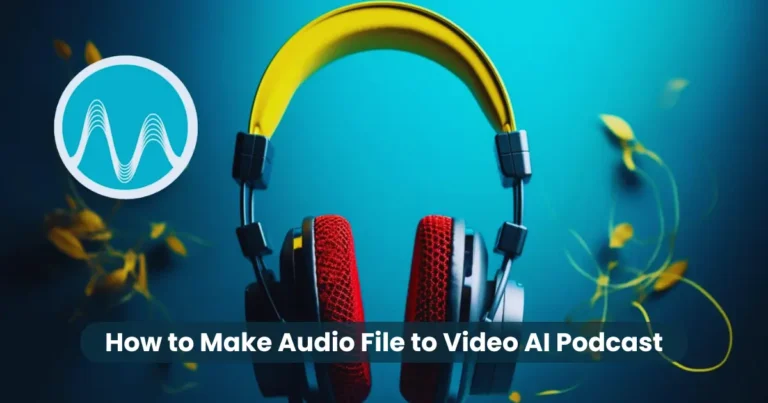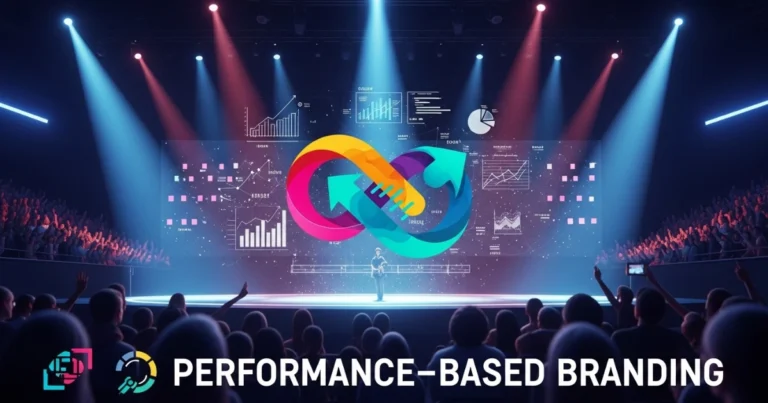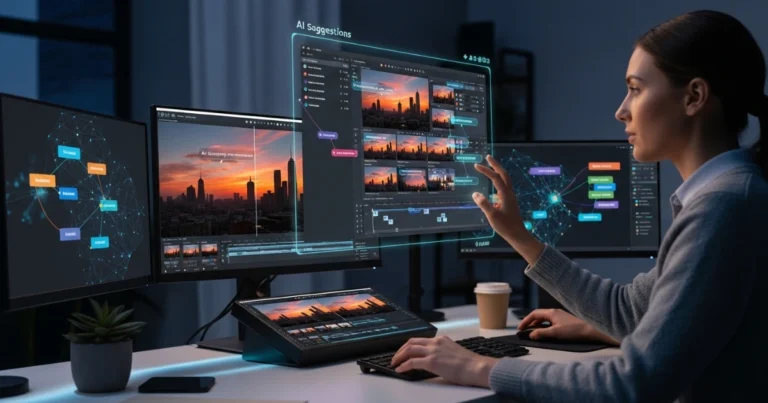Exploring the Architecture of AI Video Models

Contents
- 1 What Are AI Video Models?
- 2 Key Components of AI Video Models
- 3 Neural Network Architecture in Video Models
- 4 Role of Convolutional Neural Networks (CNNs)
- 5 Temporal Modeling with Recurrent Neural Networks (RNNs)
- 6 Attention Mechanisms and Transformers in AI Video
- 7 Preprocessing and Feature Extraction
- 8 Training AI Video Models: Methods and Challenges
- 9 Applications of AI Video Architecture
- 10 Emerging Trends in AI Video Model Design
As artificial intelligence continues to evolve, exploring the architecture of AI video models has emerged as a vital area of innovation. With video content dominating platforms like YouTube, TikTok, and Instagram, the demand for machines that can analyze, understand, and even generate videos has skyrocketed. These AI video models are no longer science fiction they are actively shaping industries such as entertainment, education, surveillance, and marketing.
At the heart of these systems lies a complex structure of neural networks, attention mechanisms, and data-processing pipelines. Each element plays a unique role in how the model interprets motion, tracks objects across frames, and constructs meaningful visual sequences. By understanding the architecture behind these models, we gain insight into their capabilities, potential, and future direction.
In this article, we’ll take a deep dive into the foundational building blocks, from convolutional layers to transformers. We’ll also explore how these systems are trained, where they’re applied, and what challenges researchers face in pushing their limits further. Let’s begin this exciting journey into the world of intelligent video technology.
What Are AI Video Models?
AI video models are sophisticated machine learning systems designed to interpret, analyze, and generate video content. Unlike traditional models that process static images, these advanced models understand motion, continuity, and context across a series of frames. This dynamic capability allows them to perform complex tasks such as activity recognition, object tracking, video summarization, and synthetic video generation.
At their core, AI video models combine spatial analysis, which examines the contents of individual frames, with temporal analysis, which evaluates how those contents change over time. This dual-layered approach makes them uniquely suited to handling real-world video data.
For instance, a model trained to recognize human actions in surveillance footage doesn’t just detect a person in a frame it learns to identify whether they are walking, running, or interacting with another object. It does this by analyzing the sequence of frames rather than viewing each one in isolation.
Furthermore, as researchers keep exploring the architecture of AI video models, they continue to push the boundaries of what these systems can do. Recent innovations now enable AI to generate realistic video scenes from text prompts, predict future actions in a video stream, and assist in video editing tasks with minimal human input.
In short, AI video models are revolutionizing the way machines perceive and interact with visual content, setting the stage for smarter, more intuitive applications across countless industries.
Key Components of AI Video Models
To truly understand how AI video systems function, it’s essential to break down the key components of AI video models. Each element plays a critical role in processing the spatial and temporal dimensions of video data. When combined, these components form the foundation of an efficient and intelligent video analysis system.

1. Input Layer
The input layer receives raw video data, typically in the form of sequential frames. It prepares these frames for processing by normalizing dimensions, frame rate, and sometimes converting the video into grayscale or RGB formats. This layer sets the stage for all further computation.
2. Feature Extraction Module
Here, convolutional neural networks (CNNs) analyze each frame to detect objects, shapes, colors, and textures. These features provide spatial understanding, enabling the model to recognize what is happening in a single frame.
3. Temporal Modeling Unit
Because videos involve movement and progression, this unit captures the temporal aspect. Recurrent neural networks (RNNs), Long Short-Term Memory (LSTM) units, or more recently, transformers, process sequences to learn how frames relate over time. This helps the model recognize actions or predict future frames.
4. Attention Mechanisms
Modern video models often incorporate attention layers. These allow the model to focus on the most important parts of the frame sequence, improving accuracy in tasks like video captioning, summarization, or scene detection.
5. Decoder or Output Layer
Once the video data has been fully processed, the output layer generates results this could be classification labels, bounding boxes, action predictions, or even newly synthesized video frames.
When exploring the architecture of AI video models, it’s clear that the strength of these systems lies not in any single component, but in how well these elements integrate and communicate. A finely tuned architecture can drastically enhance performance, accuracy, and application versatility.
Neural Network Architecture in Video Models
At the core of any intelligent video system is its neural network architecture. These networks are responsible for analyzing both the static elements in individual frames and the dynamic relationships between them. When exploring the architecture of AI video models, understanding how these neural networks operate is crucial.
Typically, AI video models rely on a hybrid structure that combines multiple types of neural networks to handle different tasks. Here’s how they work together:

1. Convolutional Neural Networks (CNNs) for Spatial Analysis
CNNs specialize in spatial feature extraction. They scan each frame, detect key patterns like edges, textures, and shapes, and reduce dimensionality through pooling layers. This spatial data becomes the foundation for higher-level interpretation later in the model.
2. Recurrent Neural Networks (RNNs) for Temporal Sequences
While CNNs handle space, RNNs take on time. They analyze sequences of features across frames, learning how visual elements evolve. More advanced variants, like LSTM and GRU (Gated Recurrent Unit), overcome traditional RNN limitations by retaining long-term dependencies in video data.
3. Transformer Models for Attention-Based Learning
Transformers have revolutionized neural network architecture in recent years. Originally designed for language, they are now adapted for video modeling. They use attention mechanisms to prioritize the most relevant frame features, allowing for superior temporal reasoning and scalability.
4. Spatiotemporal Fusion Layers
These layers integrate spatial and temporal data, enabling the model to understand complex video patterns. For example, recognizing that a person is jumping, not just standing still, requires interpreting both space (body position) and time (motion over frames).
Ultimately, exploring the architecture of AI video models means navigating through these interconnected networks. Each layer contributes to a comprehensive understanding of visual information, from static detection to motion prediction. As deep learning evolves, these architectures are becoming more refined, accurate, and capable of handling vast amounts of unstructured video content.
Role of Convolutional Neural Networks (CNNs)
Convolutional Neural Networks (CNNs) serve as the backbone for spatial analysis in AI video models. When exploring the architecture of AI video models, one quickly discovers that CNNs are indispensable for recognizing and extracting features from individual frames.
CNNs operate by applying filters (or kernels) to input images in order to detect patterns such as edges, textures, and shapes. These patterns help the model recognize objects, backgrounds, and environmental context within a frame. By stacking multiple convolutional layers, the network builds a hierarchical understanding of visual content from simple lines to complex structures like faces or vehicles.
Why CNNs Matter in Video Models
Unlike traditional image processing methods, CNNs automatically learn relevant features during training, eliminating the need for manual programming. This ability to adapt and scale makes them highly efficient for video tasks where visual complexity varies across scenes.
In AI video models, CNNs are often used in the early stages of the pipeline to extract spatial information before passing it to temporal layers such as RNNs or transformers. This division of labor ensures that both space and time are analyzed in-depth.
CNN Variants in Modern Video Architecture
As researchers continue exploring the architecture of AI video models, they have developed CNN variants optimized for video data. For example:
- 3D CNNs: Extend traditional CNNs to process both spatial and temporal dimensions simultaneously by using 3D kernels.
- Two-Stream CNNs: Use two parallel networks one for spatial data (RGB frames) and another for temporal data (optical flow) to capture motion and appearance simultaneously.
Ultimately, CNNs lay the groundwork for visual understanding in AI video systems. Their role in pattern recognition, feature extraction, and hierarchical representation is vital to the success of any video-based AI model. Without them, the system would struggle to “see” what’s happening in a single frame let alone a sequence.
Temporal Modeling with Recurrent Neural Networks (RNNs)
While CNNs handle spatial data within individual frames, Recurrent Neural Networks (RNNs) take charge of interpreting how these frames change over time. As we continue exploring the architecture of AI video models, it becomes clear that capturing temporal dependencies is essential for accurate video analysis and generation.
RNNs are specifically designed to process sequential data. They retain a form of memory by feeding output from one time step as input to the next. This makes them ideal for tracking motion, predicting actions, and understanding long-range dependencies in a video stream.

How RNNs Enhance Video Understanding
By analyzing the order and timing of events, RNNs enable models to distinguish between similar actions. For example, “waving” and “throwing” may look identical in a single frame, but when observed across a sequence, their differences become clear. RNNs excel at drawing these distinctions by learning from the progression of frames.
Additionally, RNNs help improve context-awareness. Instead of treating each frame in isolation, the model understands it as part of a continuous timeline making decisions based on what happened before and what’s likely to happen next.
Advanced RNN Variants in AI Video Models
As deep learning techniques advance, so do the forms of RNNs used in video modeling:
- Long Short-Term Memory (LSTM): LSTMs overcome the vanishing gradient problem, allowing models to learn longer sequences more effectively.
- Gated Recurrent Units (GRU): A streamlined version of LSTM, GRUs offer similar performance with fewer parameters, making them faster to train.
- Bidirectional RNNs: These models read sequences both forward and backward, giving the system a more comprehensive understanding of temporal relationships.
In the broader context of exploring the architecture of AI video models, RNNs provide the bridge between spatial features and temporal awareness. Their ability to learn from sequences transforms still frames into meaningful stories, enabling applications like action recognition, scene transition detection, and video captioning.
Attention Mechanisms and Transformers in AI Video
As AI video models grow in complexity and capability, attention mechanisms and transformers are rapidly becoming essential components. When exploring the architecture of AI video models, one finds that these innovations solve a critical challenge: identifying and focusing on the most relevant parts of a video sequence.

What Are Attention Mechanisms?
Attention mechanisms allow neural networks to selectively concentrate on specific parts of an input sequence such as key frames or motion patterns while ignoring less relevant data. This selective focus enhances the model’s performance by reducing noise and improving interpretability. In video analysis, attention can help prioritize facial expressions, sudden movements, or shifting backgrounds.
How Transformers Revolutionize Video Modeling
Transformers, originally developed for natural language processing, have now proven effective for video tasks due to their ability to process data in parallel and capture long-range dependencies. Instead of processing videos frame by frame like RNNs, transformers analyze entire sequences at once using self-attention.
This architecture empowers the model to understand relationships between distant frames, making it ideal for:
- Action recognition across long video clips
- Generating captions that consider full context
- Summarizing complex scenes accurately
Transformers in Action
Researchers have adapted transformer models specifically for visual data through architectures like:
- Vision Transformers (ViT): Designed for image understanding, often used for frame-level processing.
- TimeSformer: Applies divided attention across both spatial and temporal dimensions.
- Video Swin Transformers: Offers hierarchical representations and scales efficiently for long videos.
By integrating attention mechanisms and transformers, AI video models gain the ability to reason globally, not just locally. This shift marks a significant leap forward when exploring the architecture of AI video models, offering greater accuracy and versatility in real-world applications like surveillance, content generation, and video-based recommendation systems.
Preprocessing and Feature Extraction
Before any meaningful learning can happen, raw video data must be transformed into a form that AI models can understand. That’s where preprocessing and feature extraction come into play. When exploring the architecture of AI video models, these two steps act as the essential foundation for effective learning.
Preprocessing: Cleaning and Standardizing the Input
Preprocessing involves preparing video frames so the model receives clean, consistent data. Common steps include:
- Frame Sampling: Extracting a manageable number of frames from long videos to balance performance and accuracy.
- Resizing and Cropping: Normalizing frame dimensions for uniformity.
- Normalization: Adjusting pixel values to a standard range, which helps neural networks learn faster and more reliably.
- Data Augmentation: Introducing variations (e.g., rotation, flipping, brightness changes) to prevent overfitting and improve model robustness.
These steps not only reduce computational complexity but also improve generalization during training and inference.
Feature Extraction: Turning Pixels into Patterns
Once the video is preprocessed, the model must extract meaningful features from each frame. This is where CNNs and other vision modules begin their work. For instance:
- Low-level features: Edges, colors, textures.
- Mid-level features: Shapes, contours, body parts.
- High-level features: Entire objects, actions, or scene contexts.
Some pipelines also use handcrafted features like HOG (Histogram of Oriented Gradients) or optical flow, especially in classical models. However, deep learning has largely shifted toward automated feature learning through CNNs, transformers, and hybrid networks.
Ultimately, exploring the architecture of AI video models requires a solid understanding of how data is prepared and transformed before reaching the learning stage. Preprocessing ensures quality input, while feature extraction ensures meaningful representation together setting the stage for smarter, faster, and more accurate AI video systems.
Training AI Video Models: Methods and Challenges
Training is where AI video models learn to make sense of the world. It’s also one of the most complex phases when exploring the architecture of AI video models. Success in this stage depends on the choice of methods, the quality of data, and the ability to overcome practical challenges.

Popular Training Methods
AI video models are usually trained using supervised learning, where labeled video datasets guide the learning process. Here are some commonly used training approaches:
- End-to-End Training: The model learns directly from input videos to output predictions, optimizing all layers simultaneously.
- Transfer Learning: Pretrained models (often from image tasks) are fine-tuned on video datasets, reducing time and computational cost.
- Multi-Task Learning: A single model learns multiple tasks such as action detection and scene classification by sharing representations across tasks.
In all these methods, the model relies heavily on well-structured datasets and efficient backpropagation algorithms like Adam or SGD.
Challenges in Training AI Video Models
Despite the progress, training these models comes with significant challenges:
- Data Volume and Quality: Training requires massive labeled video datasets. Collecting, annotating, and curating them is time-consuming and expensive.
- High Computational Cost: Video frames are data-heavy, especially when models process both spatial and temporal features. This demands robust GPUs and long training times.
- Overfitting: With limited data or excessive model complexity, the AI may learn to memorize instead of generalize.
- Temporal Consistency: Teaching models to maintain context across long sequences remains a tough nut to crack, especially in real-time or long-duration video analysis.
- Class Imbalance: In many video datasets, some actions or events are overrepresented, leading to biased predictions.
The Role of Data Augmentation and Curriculum Learning
To overcome these hurdles, researchers apply data augmentation, generating diverse training samples by slightly altering video inputs. Additionally, curriculum learning starting with simple tasks before introducing complex ones helps stabilize the learning curve.
In essence, exploring the architecture of AI video models is incomplete without addressing how these models are trained. By selecting the right methods and addressing key challenges, developers can significantly boost performance, making AI video models smarter and more reliable in real-world applications.
Applications of AI Video Architecture
When exploring the architecture of AI video models, it’s vital to understand how these technologies impact real-world scenarios. The sophisticated design of AI video models has unlocked a wide range of applications across industries, transforming how we interact with video content.
Video Surveillance and Security
AI video models power intelligent surveillance systems that detect unusual behaviors, recognize faces, and track objects in real time. By analyzing spatial and temporal data, these models enhance public safety and reduce manual monitoring efforts.
Autonomous Vehicles
Self-driving cars rely heavily on AI video architectures to interpret road scenes, identify pedestrians, and anticipate movements. CNNs extract spatial features from camera inputs, while RNNs and transformers understand temporal dynamics, ensuring safer navigation.
Content Creation and Editing
AI video models revolutionize video editing by automating tasks like scene segmentation, object removal, and style transfer. Creators benefit from faster workflows and innovative effects powered by deep learning.
Healthcare and Medical Imaging
In medical diagnostics, AI video models analyze ultrasound or endoscopy videos to detect anomalies with high accuracy. Their ability to process temporal sequences helps monitor patient conditions over time.
Entertainment and Gaming
From realistic animations to interactive gameplay, AI video models contribute to creating immersive experiences. They generate realistic character movements and enable real-time scene adaptation.
Clearly, exploring the architecture of AI video models reveals a versatile technology shaping many facets of modern life. As AI advances, these applications will only expand, offering more intelligent and efficient video solutions.
Emerging Trends in AI Video Model Design
When exploring the architecture of AI video models, staying updated on emerging trends is crucial. Innovations continue to push the boundaries of what AI can achieve in video understanding and generation, making this an exciting and rapidly evolving field.

1. Multimodal Learning
New AI video models increasingly combine visual data with other modalities like audio, text, and sensor data. This multimodal approach allows models to gain a richer context, improving performance in applications such as video captioning and action recognition.
2. Efficient and Lightweight Models
Researchers focus on creating smaller, faster models without sacrificing accuracy. Techniques like model pruning, quantization, and knowledge distillation help deploy AI video models on edge devices and mobile platforms, broadening their accessibility.
3. Self-Supervised and Unsupervised Learning
Labeling video data is expensive and time-consuming. Therefore, self-supervised and unsupervised methods that learn from unlabeled videos are gaining traction. These approaches reduce reliance on annotated datasets and enable models to discover patterns autonomously.
4. Integration of Transformers and Graph Neural Networks
The combination of transformers with graph neural networks (GNNs) is an emerging trend to better capture complex relationships between objects and events in videos. This hybrid architecture improves reasoning about interactions within scenes.
5. Real-Time Video Understanding
With advances in hardware and algorithms, AI video models are increasingly capable of real-time processing. This trend opens new possibilities for live video analytics in security, sports, and interactive entertainment.
In summary, exploring the architecture of AI video models today means engaging with these cutting-edge trends. They promise to make AI video systems more intelligent, efficient, and versatile, paving the way for novel applications across industries.
Conclusion
In conclusion, exploring the architecture of AI video models reveals a sophisticated blend of neural networks, attention mechanisms, and advanced training techniques. These models transform raw video data into meaningful insights, enabling powerful applications across diverse industries.
Throughout this article, we have seen how key components like CNNs, RNNs, and transformers work together, supported by effective preprocessing and robust training methods. Furthermore, emerging trends such as multimodal learning and real-time processing continue to push the boundaries of AI video capabilities.
As technology evolves, understanding the architecture of AI video models becomes increasingly important for researchers, developers, and businesses alike. By mastering these concepts, stakeholders can harness AI to unlock innovative video solutions that enhance security, entertainment, healthcare, and more.
Ultimately, exploring the architecture of AI video models offers a window into the future of intelligent video processing, promising smarter, faster, and more versatile systems.






